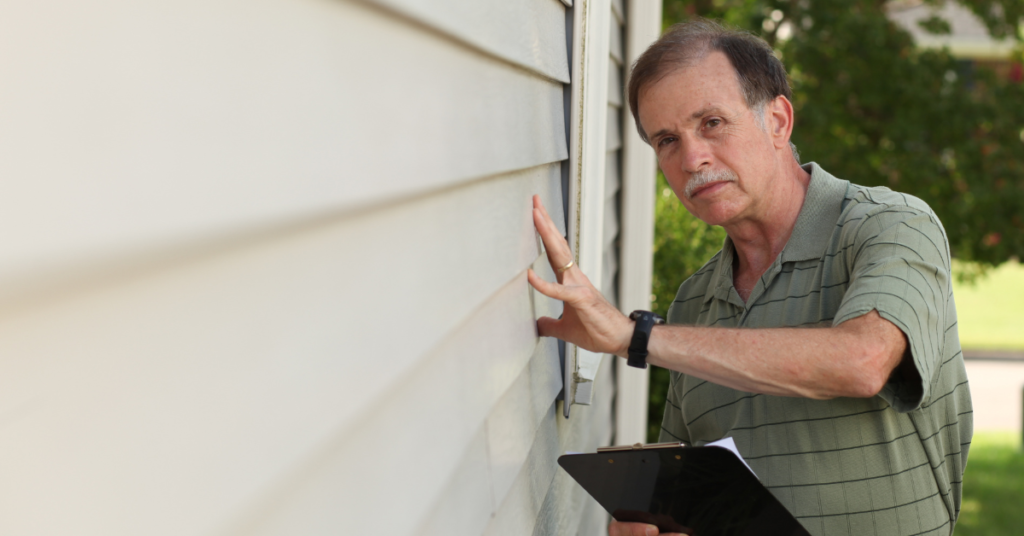What to Look For After a Snow and Ice Storm: Examining Your Siding
Snow and ice storms like the one we just had can be tough on buildings, and one of the first things we think about is potential damage to the roof. However, another key area that can be impacted is the siding. Now that the ice and snow are behind us (at least for now), as a homeowner or commercial property owner, it’s important to inspect your siding after such events to ensure its integrity and prevent future problems.

1. Visible Damage to Siding:
- Cracks and Breaks: Inspect your siding for any visible cracks or breaks. These can be caused by the weight and pressure of snow and ice. Even small cracks in the siding can lead to bigger problems down the road if they are not addressed.
- Warped or Bulging Panels: Look out for any warping or bulging in the siding panels. This can indicate that moisture has gotten trapped behind them, which might lead to more serious damage.
2. Water Damage Indicators:
- Stains or Discoloration: Noticeable stains or discoloration on your siding can be a sign of water damage. This is often a result of melting snow finding its way behind the siding.
- Mold or Mildew Growth: Check for any signs of mold or mildew, which thrive in moist environments. This is often a clear indicator of water retention in or under the siding.
3. Structural and Foundation Concerns:
- Siding Pulling Away from the House: Examine if any siding panels are starting to pull away or detach from the house. This can compromise the protective layer of your building.
- Foundation Damage Signs: While inspecting the siding, also look for any signs of foundation damage, as this can indirectly affect the stability and attachment of your siding.
4. Inspecting Siding Seals and Joints:
- Loose or Missing Caulking: Check the caulking around windows, doors, and where the siding meets trim. Loose or missing caulking can allow moisture to penetrate, leading to damage.
- Gaps in Siding Joints: Ensure there are no gaps in the siding joints. Gaps can let in cold air and moisture, which can exacerbate damage over time.
5. When to Call a Professional:
- Assessing Major Damage: If you notice significant damage or are unsure of the extent, it’s wise to call a professional. They can provide a thorough inspection and advise on the best course of action.
- Professional Repair Services: For major repairs, professional services ensure that your siding is restored properly, protecting your property from future weather-related damage.
6. Preventive Measures for Future Storms:
- Regular Maintenance Tips: Regular maintenance, such as cleaning and inspecting your siding, can help it withstand future storms better.
- Upgrading Siding Materials: If you’re facing frequent siding issues, consider upgrading to more durable materials that can better withstand harsh weather.
Inspecting your siding after a snow and ice storm is crucial for maintaining the longevity and appearance of your property. Addressing even small problems now can prevent them from turning into more costly repairs down the road.
Need a Professional Inspection? If you’re concerned about your siding after the recent storm, don’t hesitate to reach out to the pros here at Stutzman & Kropf for a professional inspection and repair services.
This post was originally published on StutzmanandKropf.com. For all of your Albany-area siding and roofing needs, give Stutzman & Kropf a call today.
